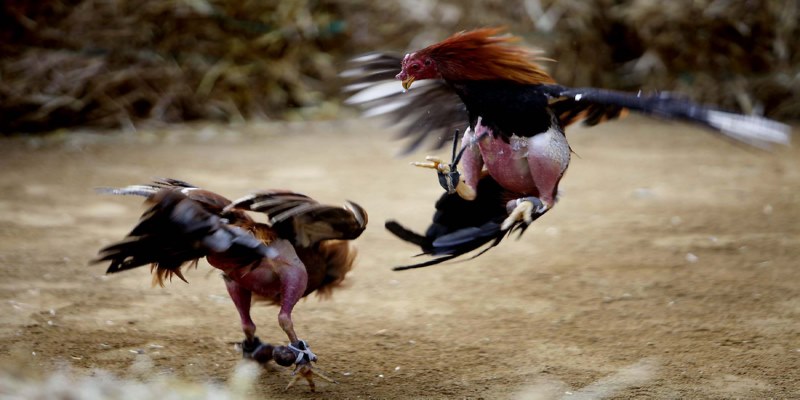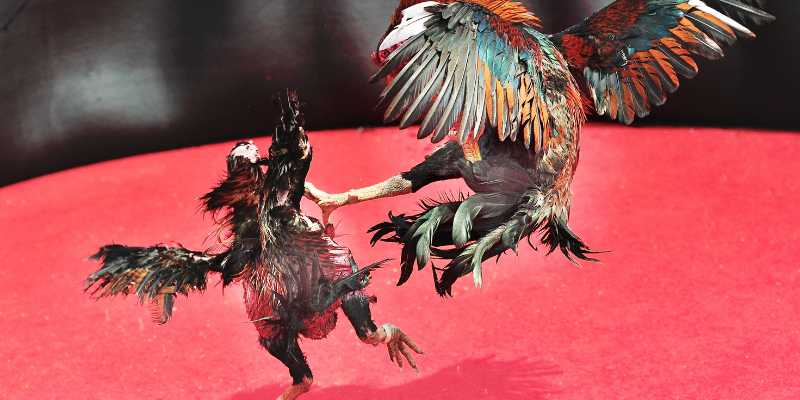Training fighting cocks is an extremely important process that every chicken breeder needs to master if they want to have a quality fighting cock. From choosing the breed of chicken, nutrition to training skills, all affect the fighting ability of the chicken. The article 8xbet below will provide you with in-depth knowledge about the process of training fighting cocks.
Factors to be determined in Training fighting cocks

Before we get startedcockfighting training, breeders need to clearly identify the main factors affecting success in training chickens.
Internal strength of fighting cock
The internal strength of a chicken is an indispensable factor in any fight. It includes strength, endurance, and fighting spirit.
Good breeds of fighting cocks are generally healthier and less prone to disease. Breeding is also important in the early stages. When you have a cock that is known as a “god of war”, training will be much easier. However, regular health checks are also vital to ensure that they are always fit for battle.
On the other hand, like any sport, cockfighting also requires a strong spirit. This means that the cocks need to be raised in a friendly environment, reducing stress. Cockfighting not only needs physical strength but also needs a strong mentality to win over the opponent.
Proper nutrition
Nutrition is a very important part of the process.cockfighting trainingA complete diet will help chickens develop to their maximum strength.
Fighting cocks need a diverse and nutritious food source such as corn, green beans, and other seeds. In particular, vitamins and minerals will help the cocks increase resistance and recover quickly after heavy training sessions.
In addition, water also plays a very important role in maintaining the health of chickens. Make sure that chickens always have a clean and sufficient water source to avoid dehydration or lack of water.
Effective training process
Once you have a good foundation from the chicken breed and proper nutrition, the next step is the training process.
This process is usually planned in stages: warm-up, strengthening, familiarization with the arena and fighting techniques.
Each separate training session will help the chicken become more flexible and agile. Exercises need to be changed regularly to create newness and stimulate the production of testosterone – an important hormone in the body.
Similar to an athlete, fighting cocks also need time to rest and recover. This will help them avoid injuries and reduce stress.
Popular forms of training fighting cocks

In the processcockfighting training, there are many methods and forms to improve efficiency. Below are some notable forms.
Training with physical exercises
To equip fighting cocks with the best fighting skills, physical training is a very important step. Physical exercises help increase the strength and flexibility of the cock.
Exercises can include long distance running, high chair jumping, or even pulling exercises. Each exercise will work different muscle groups of the chicken, helping it become more well-rounded in its fighting ability.
The design of exercises must be flexible, suitable for each stage of age and current health of the chicken. A smart approach to training will demonstrate the bravery of the chicken farmer.
Tactical techniques in the arena
Once the chicken is used to physical exercise, the next stage is training in fighting techniques in the arena. This can include both offensive and defensive techniques.
Attacking techniques are important because they determine the likelihood of winning a fight. Attacks such as pecking, kicking, or biting will create dynamic behavior and increase the ability to inflict damage on the opponent.
At the same time, defensive techniques also need attention. Chickens need to learn how to dodge the opponent’s attacks, using flexible movement skills to protect themselves.
Fight with other chickens
One of the interesting steps in the processcockfighting trainingThat is to put the chicken into confrontation with other chickens. This is a very effective way to evaluate the strength of the chicken.
However, this should be done carefully and with planning. Chickens of similar strength and temperament should be chosen to avoid serious injuries.
Through confrontation, you can recognize the strengths and weaknesses of the chicken, thereby adjusting the training method to achieve optimal results.
Common mistakes when training fighting cocks
In the processcockfighting training, no one can avoid mistakes. Below are common mistakes that chicken farmers often make.
Training fighting cocks and common mistakes
Overtraining
One of the biggest mistakes is putting a chicken on a training schedule that is too hard. While you want your chicken to get stronger, pushing it constantly without allowing for rest will lead to fatigue and injury.
Chickens need a reasonable training schedule that includes rest and recovery time. Keep in mind that growth cannot take place at maximum intensity all the time.
Lack of proper nutrition
The nutritional needs of fighting cocks also play an important role in their growth and fighting ability. If they neglect to provide adequate nutrition or use poor quality feed, they will not have enough strength to compete in matches.
Build a suitable, diverse and rich diet. Food needs to be supplemented at the right time to avoid chickens lacking essential nutrients.
Lack of patience and care
Finally, the role of the breeder cannot be ignored. Patience and care are essential throughout the process.cockfighting training. Many people want to see quick results, forgetting that everything takes time.
Having a detailed plan and tracking your chickens’ progress will help you handle the situation more effectively. You may have to adjust your plan from time to time to accommodate the individual chickens’ situation.
Frequently Asked Questions about Gamecock Training
Is it difficult to train fighting cocks?
Training fighting cocks is not difficult, but requires patience and experience.
What do I need to prepare before training fighting cocks?
You need to prepare quality chicken breeds, nutritious feed and a specific training plan.
What should the training schedule for fighting cocks be like?
Your schedule should include a mix of exercise and rest. Aim for 30 minutes to 1 hour of exercise each day.
What should fighting cocks eat?
Fighting cocks need a diet rich in protein, fiber, vitamins and minerals.
Can I train my own fighting cock?
Absolutely. However, you need to learn the methods and techniques to get the best results.
Conclude
In general, the process cock fighting trainingis a long journey, requiring meticulous research, careful preparation and attentive care. Factors such as chicken breed, nutrition and training process all play an important role in building a strong fighting cock. Hopefully the above article has provided you with useful information, helping you become a successful fighting cock breeder!
